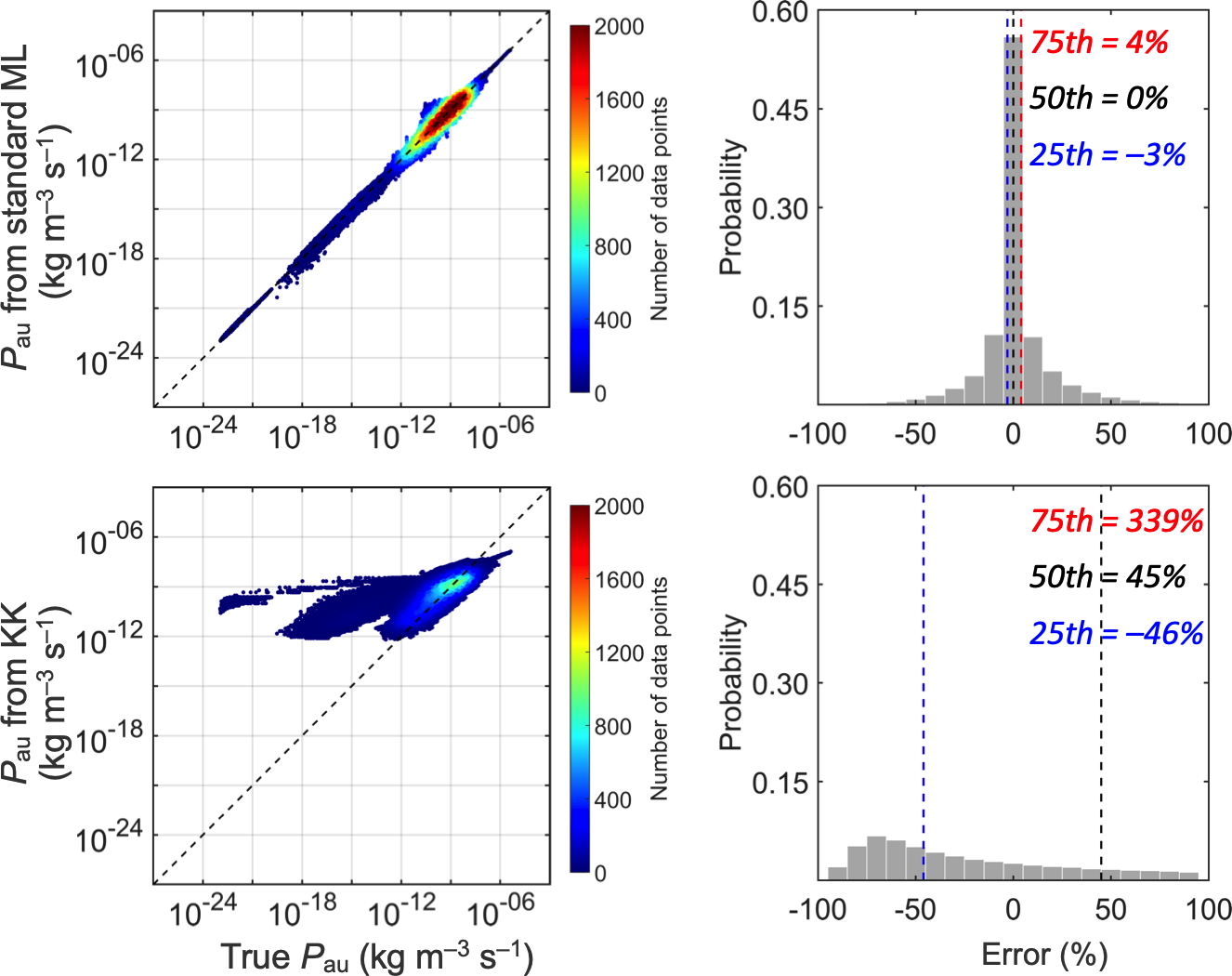New insights and new parameterizations for autoconversion and accretion using machine learning
Submitter:
Chiu, J.-Y. Christine — Colorado State University
Area of research:
Cloud Processes
Journal Reference:
Science
The collision-coalescence of water drops in air is a fundamental growth process of warm rain. Precipitation can form via the autoconversion process with coalescences between cloud droplets; it can also form via the accretion process with coalescences between cloud droplet and rain drop. Improved understanding of the rate of autoconversion and accretion is crucial, not only in the determination of precipitation onset and in the prediction of precipitation amount, frequency, and susceptibility to aerosols, but also in the prediction of surface temperature in climate change. Capitalizing on cloud probe measurements collected from the ARM Aerosol and Cloud Experiments in the Eastern North Atlantic (ACE-ENA) field campaign, we provide new insights and new parameterizations for the autoconversion and accretion processes.
Impact
Our analyses have revealed a key role of rain drop number concentration in the parameterization of autoconversion rates, which is missing in current weather and climate models. The newly developed parameterization predicts much improved autoconversion rate in the beginning of cloud spectrum broadening, potentially alleviating the longstanding issue in models that drizzle too frequently. Additionally, our parameterization suggests that the autoconversion rate relates to cloud droplet number concentration with a smaller sensitivity, which will affect precipitation susceptibility and help to constrain aerosol indirect effects.
Summary
We have built machine learning models to predict autoconversion and accretion rates from cloud and drizzle properties, using measurements from the ACE‐ENA campaign in the Azores and the stochastic collection equation formulated as a two-moment bin model. The uncertainty in the new estimates of autoconversion and accretion rates are about 15% and 5%, respectively. Our results confirm that cloud and drizzle water content are the most important factors for determining accretion rates. For autoconversion, in addition to cloud water content and droplet number concentration, we discover a robust dependence on drizzle number concentration. This finding is unexpected, because the autoconversion process represents the coalescence between cloud droplets and is causally only related to cloud properties. However, drizzle number concentration does contain information on the width and evolution of the cloud droplet size distribution, and hence indirectly on the autoconversion rate. By using simple collection kernels, we replicate this dependence in theoretical derivations. This implies that the relation between autoconversion rate and drizzle number concentration is real and should be considered in the parameterizations. Additionally, our power-law parameterization suggests that the autoconversion rate relates to cloud droplet number concentration with an exponent of 0.75, smaller than often assumed in models, which will affect precipitation susceptibility and warrants further investigation.
All results including the trained machine learning models have been submitted to the ARM Data Center as a principle investigator (PI) product.


